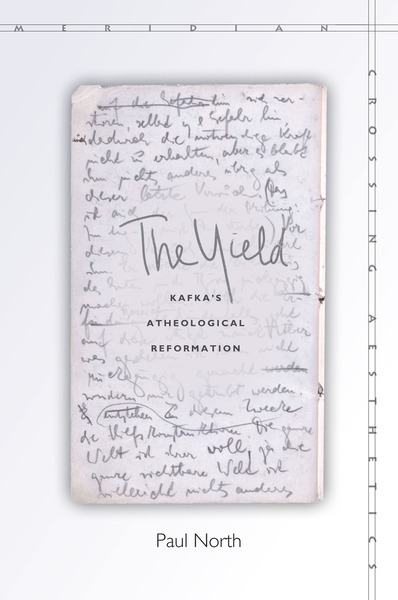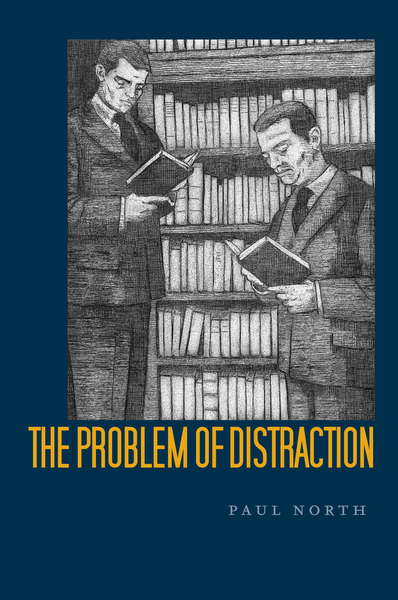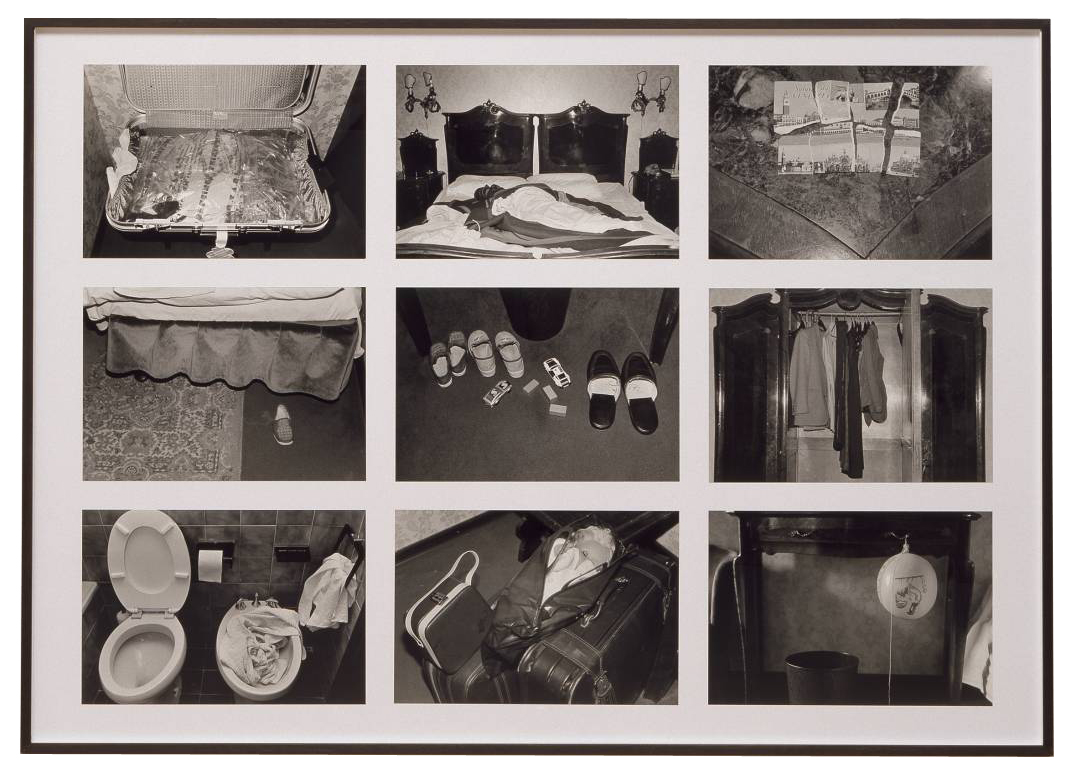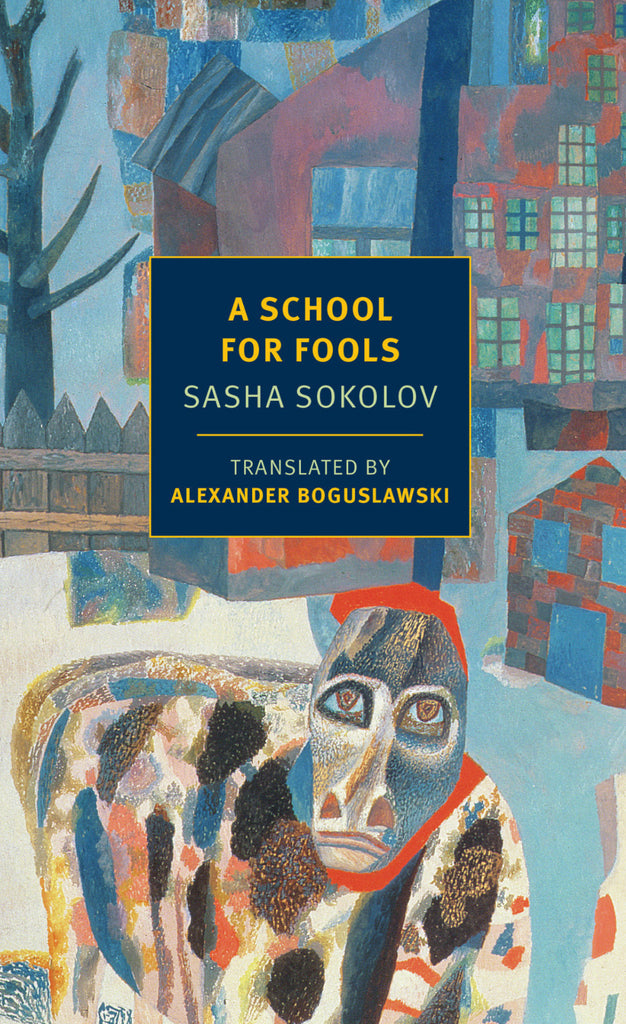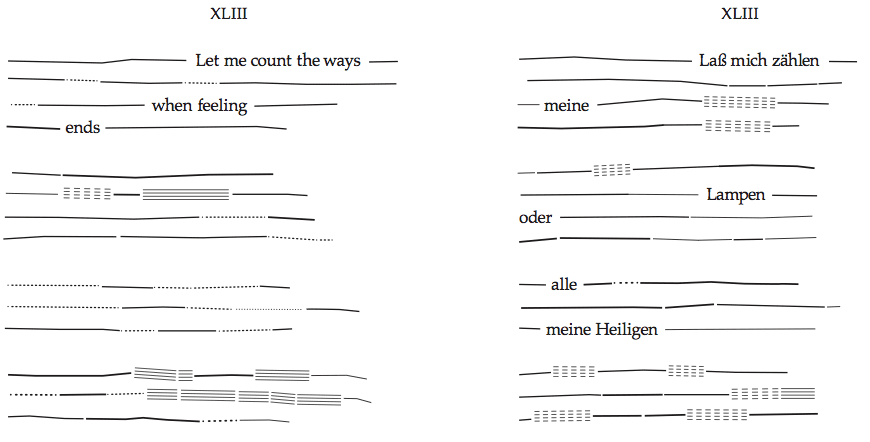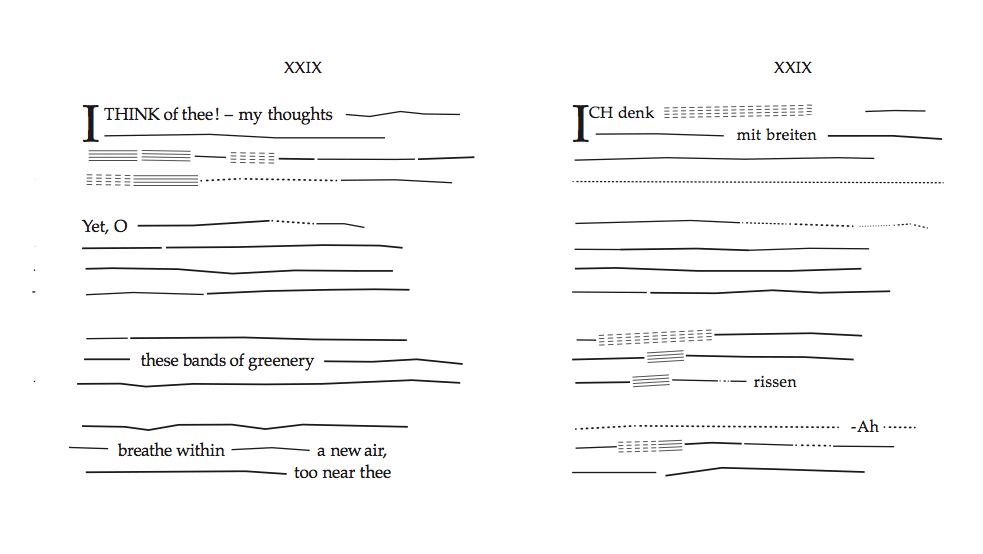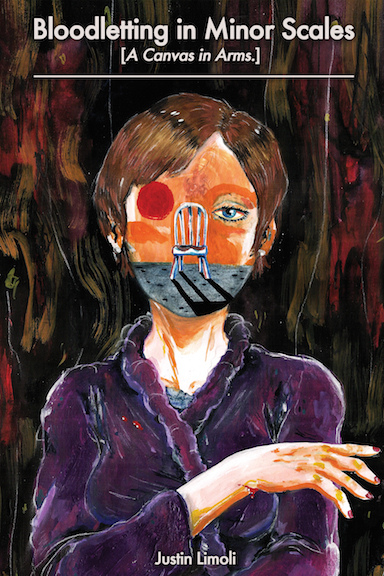![Bloodletting in Minor Scales Cover]() Justin Limoli,Bloodletting in Minor Scales [A Canvas in Arms.]. Plays Inverse, 2015. Preview
Justin Limoli,Bloodletting in Minor Scales [A Canvas in Arms.]. Plays Inverse, 2015. PreviewA mother attempts suicide and fails. Life goes on, but as her family picks up the pieces, gratitude mixes with sadness & anger at the attempted departure. In this dream-like play in verse, blood becomes a character, hearts are fed to the stage, and Dialogue delivers a monologue as Justin tries to determine whether he can truly forgive or forget what has been done.
"What a gorgeous, intense, original work. As the feral offspring of Samuel Beckett and Jack Spicer, and as his glorious, sincerely hilarious self, Justin Limoli navigates territories of love, family, and survival, and approaches the realms of verse and drama (tender, wise, absurd) with his powerful first book,
Bloodletting in Minor Scales [A Canvas in Arms.]. This book is pivotal, a suspenseful exploitation of a single life-changing event and the surprises that hide in the psyche. It is as much about inventing form as abiding it, as much about healing as performance. It is a remarkable narrative of perception presented in fractals. The verse play as we've known it is done." -
Maureen Seaton
An intricate knife puzzle of words and ideas, as seen through a shattered syntax mirror. One thinks of the painting by James Ensor entitled
Masks Fighting Over a Hanged Man." -
Kris Saknussemm
"The language is rich and rousing, with echoes of the convoluted closet drama of Dylan Thomas, Edith Sitwell, Arthur Kopit, and the French surrealists, and its picture of a boy beset by his mother trying to kill herself of course brings echoes of Long Day's Journey into Night or Tiny Alice—or earlier, pre-modernist plays of the classical era. Justin Limoli writes dialogue fresh as country air, and yet it is the dark, nightmarish, and precise atmosphere he can conjure up with a single noun, like 'copper,' that you will come out of the theater remembering." - Kevin Killian
"I read Bloodletting in Minor Scales [A Canvas in Arms.] and I re-read it. I do not know what to do with this book. Take it in or refuse it? Either way, reading is happening. Thus, this is extreme poetry—it faces and evades, creating a scaffold in the tradition of poets theater around a narrative '...more like sifting when you try to hold it.' A failed suicide, a mother who is beloved, difficult rooms, details that most would prefer to shun. Blood knife anger forgiveness and back again. Justin Limoli writes it all. What is poetry for? This. Admit that life is staged via language and we are all murmuring, teetering at the edge of a drama begging to be redacted. Such power from book-sized pages, and as I open, agreeing to read on and again, the lyric pulls me back from a precipice called 'impossible.' Such wide-angel I mean wide-angle beauty." - Jill Magi
Justin, the playwright’s first name as a character in his own play, and Blood, declaring itself “the bleeding finite,” discuss the beginnings.
Blood: Yes, and all beginnings need victims.
Justin: I didn’t want this.
Some works of art are their own beginnings (and ends); and these works start something in and of themselves, in the sense of being a start in the world. Such acts of initiation are neither simple, nor straightforward, nor victimless (starting with the artist him or herself first and foremost), nor a matter of intent, nor control. The force of the work creates its own form. The force of the work — its need, its passion or anguish, its vitality or rage against death, against oblivion — makes it its own thing, its own genre,
sui generis. But to use words such as “unique,” “innovative,” and “original” risks the hyperbole attending any
sui generis claims, since there are no vacuums in the world of art or forms. The world works into all works. It is the ingrate’s arrogance to neglect the influence of culture and precursors (though more than any other, the
sui generis work creates its own precursors, as Jorge Luis Borges would say: the brilliance of a surprising configuration illuminates forerunners from a new angle, casting back their shadows). Still, in complete acknowledgement of genres and handed-down forms, sometimes an urgency presses through it all, and becomes transformative. Conscious or not, in the imperative of the creative force, the artist of a
sui generis work produces on her or his own terms, and by internal necessity comes to terms with what the work presses through.
The book of Justin Limoli’s play,
Bloodletting in Minor Scales [A Canvas in Arms.], is such a work — there’s nothing like it and yet it’s recognizable immediately as a poet’s lyric keening. Sensitive, discerning, and heart-scarred, the book’s author refuses to let go his desperate loving hold on a harrowing event: his mother’s attempted suicide. The narrative is shattering. Its contents cleave through Denial. An anguished
why? busts apart the multiplicity of forms constituting the work: prose, drama, and poetry (and the poetry itself enters the drama in a variety of poetic forms) — and though the question is rhetorical, the anguish is an earnest power. This power bleeds teardrops from wounds, opens roses of Limoli’s poetic prose such as in the following impossible stage direction:
[Mom impales her left wrist with a swooning cleaver, a chandelier of Blood enters through her, and Justin is left. He plants his unsoiled tongue into his chest, so that it may pollinate with his heart. Mom is dragged offstage and thrown into the inner ribs of Mental Ward to recuperate.]On one level, this
sui generis work is actually of genre, implicated and categorizable as Poets Theater, or Verse Play, with traditions ancient and modern (U.S. poets’ approach to theater along identifiable lines and practices has a seventy year history at this point, cf.
The Kenning Anthology of Poets Theater 1945-1985). More,
Bloodletting could be considered a perfect example of a Poets Theater recent subgenre, Poetics Theater. As structurally divergent from mainstream American drama as you can get, Poetics Theater provides an artistically flexible, informed, and free-form experimental “space” (whether for the stage or in thought) conducive to the achievement of heightened poetic presence through performance, one of the few ancient elements of live theater left to its sole purview. Nevertheless, Limoli’s play bleeds out from the context of this genre, only to reanimate beyond all genre, as a work of art, irreducible. Plus, as hybrid as Poets Theater and Poetics Theater already are, the book enters into further cross-disciplinary engagements — indicated by the diction of music in the title and, suggested in the subtitle, painting, along with (by “in Arms”) a hint of military art, of struggle and battle — to emerge a luxuriant, hauntingly beautiful, strange and brutal chimera, real as torment.
Justin: [In a syncopated off-meter.]My name is Justinand my motherslit her wristwith a cleaverPlays Inverse is just the publisher for Limoli’s
Bloodletting in Minor Scales, a small press based in Pittsburgh (and now New York), with its focus on Poetics Theater-inflected Poets Theater. Publisher Tyler Crumrine dedicates his press to honoring the book of the play as much more than a mere script and handbook for staging: the text stands, the work exists, with or without production, and the play as written and read is as much to the purpose as the play performed. At this point, I can’t imagine the art of the play detached from the art of the book, can’t imagine it without the cover image (by Dave Watt) as a colossal backdrop canvas: curtains of brushstrokes in brown and black, the face of a woman with a side-parted bob (but only her ears and one tourmaline blue eye, sorrowful and wounded, are actual human features, for this is a stitched together face, with a mask covering mouth and chin, a chair in the place of her nose, and a patch of a perfect circle of blood-red paint like a wax seal in place of the other eye, thickness of a coat button), a knobby purple robe with lustrous globs of blood on the indent in front of her shoulder, and her arm crossed in front of her — again, the “in Arms” of the subtitle throwing multiple meanings, the text there in parallel above the prominent baring of her arm, the mother’s arm, with robe sleeve falling back — wrist gashed and dripping, but its bend as of the most lovely of gestures, a dancer’s poise of fingers and hands, held in tree limb stillness, the slight twist of a delicate branch.
The beginning of
Bloodletting repeats, because trauma is an endless loop in real life; in the phantasmagoria of the play, attempted suicide is the carousel of a carnival nightmare. The organ breaks down and mechanics go haywire and yet scenes and songs and poems revolve in garish display. Headings function dually as scene titles in the acts of the play and as poem titles as if for a collection of poems: “
Mother, as a swelling word”; “Maternal Red blossoms Petaled”; “
Mother, as a spilling”; “
Suicide repeats
Ulysses”; and the heartbreakingly wry, “I can’t give this a name.” Limoli’s lush prose has me thinking of bleeding flowers and wounds, eyes looking back from scars, and indeed there’s a bit of that actually there in the text (“blossoms where your wrists were”), but I realize I’m tending too much the mirage of a hanging garden amidst a violent, turbulent domain; I’m lingering with the knowledge — and it’s good to know — that this young poet from Hawaii, whose mother hacked her wrist with a meat cleaver, works a day job with bonsais and orchids as a horticulturist in Maui. He cultivates bloom and perfumed breath, a humid atmosphere of soothing. Good job for a poet who coaxes beauty out of horrors.
Prominent speaking parts are given to the characters of Justin and Mother and also the grandmother, Mombo, but the issue of dialogue is problematic enough (when the topics of communication are so fraught) that Dialogue itself becomes a character, as does Mental Ward — both character and setting — and so there are scenes/poems titled “
Dialogue’s Monologue” and “
Mental Ward’s Monologue,” and even Audience is given lines, along with Closure: “May I enter?” A non-comprehensive character list acts as Character List and names Poetry and Orchestra Pit and Stage Fright as characters interactive with Mom, Dad, and Justin. Throughout the play all sorts of figures, abstractions, shocks and imaginings take the stage, and speak, from the aforementioned Blood, to Cupboard and Heart, and Devil, and Dante, and Aeneas, and Camus, as well as Suicide of course, and Buckminsterfullerene, “(lovingly called
Buckyball).” This latter enters with an illustrative complexity, multivalence of interpretation and activation, in the exact same manner as Schrödinger’s Cat and Chthonic White Space later appear: a recurrent stage direction of “[
Mental Ward opens to reveal]” has Mental Ward as character and/or set offering
Buckyball as a character or stage prop or set piece. Here, affliction makes everything speak, and yet the inadequacy of what can be said has its own silent inhabitance.
The Unspoken Poem bows and exits.The multivalence of Mental Ward, as character and setting, and as actor-propellant for the drama and stage business, is illustrative of how Poets Theater works — as what can only first and primarily be imagined through the reading. The best playwrights are poets in this manner: Beckett and Shakespeare are best read; Shaw, more prosaically, is best read. Poets Theater, in particular, consciously employs the imagination of the reading to activate the poetic, and to realize the work’s imagery. The real imagined world is the original venue, and productions are merely approximations. Limoli’s Mental Ward is especially suggestive as a construct for the Theater of Imagination that is Poets Theater, but without bolted doors and bars on the windows, freeing the word
mental: a mental space performs itself in real time. It’s more than staging the play limitlessly in one’s own head during the reading (although this in itself secures the work beyond the limits of mechanics, economics, and performance talent) — imagination has the capacity to release the image in its reality, unrestricted by distinctions between external and internal. In fact, while Mental Ward — or “Mental Ward” or
Mental Ward— functions as an imagined setting and source of speech and action during the reading of
Bloodletting, for any live staging however produced there would have to be likewise a layer of imagination implicitly engaged to make it function thus as an onstage presence.
Poetics Theater, taking off from the freedom from production exigencies long enjoyed by Poets Theater diy traditions in the U.S., and extending material playfulness from theatrical imagination to word and syntax, goes even further into structural invention and overturning of theatrical expectations. Further still, Poetics Theater is an operational theater for overturning linguistic expectations. In Limoli’s practice, this allows for a recasting of the word so that Suicide can say, “My name is Suicide repeatedly” and makes sense of stage directions such as “[Verbed tense.]” Here, sophisticated confrontation with the medium of language offsets the blunt subjectivity and emotion of Limoli’s personal tragedy. As much as vulnerability is brave, the avant-garde castigates autobiographical sentiment (and the avant-garde is the garden of Poetics Theater’s growth). This can be noted in the habitual decrial of the lyric, though I am noticing more defenses of same as of late, with all due defensiveness. Be that as it may,
sui generis mastery embraces as many aspects of a medium as possible, and Limoli stays both transparent to the self-expression of his tragic event and dexterous with the textures of language’s materiality, objectivity, sensuous concretion. “Ashes between the two strokes/of cognizance.”
On the flip side, its avant-garde tenability notwithstanding (despite “tortured soul” theme and subject matter), the play’s play of aesthetics doesn’t in the least anesthetize or formalize away the truth — or the truth of suffering, or the bitterness of entreaty — as so often happens when invention is merely academic. Irresistible as Sylvia Plath’s “Daddy” — Limoli’s grown man’s cry of “Mommy,”wrung out of him.
Anguish. Agony. Intensity. The dismissal of “heaviness” from experimental or mainstream quarters alike is an evasion. One can have a demand on the audience or reader. In fact, that comes with the territory of artistic commitment: “attention must be paid,” to quote a twentieth century theater classic. I don’t much see how a political demand can be made of the case of an attempted suicide by a young man’s mother (society is sick and sickening, Western civilization discredits itself consistently, her sickness and suffering could be connected to this state of affairs and probably there’s blame to be placed therein, and yet any campaign for some cause pulled out of her despair would be missing the point and missing her, and those like her); but the artistic demand on attention ought to push its claim. The artistic demand is warranted, and takes precedence over complaints against heaviness, puts to shame disdainful frigidity that designates as “confessional” the human, and tragic.
Cloaked Epiphany: Philosophical thinking begins with the human subject – not merely the thinking subject, but the acting, feeling, living human character.Poetry at source is an intimate thinking, the philosophical personal. Art must open — or keep open, or hold threatened ground of — human spaces, including those of suffering. Justin Limoli’s
Bloodletting in Minor Scales [A Canvas in Arms.] is raging, is in pain. Is a work of wracking love for a suicidal mother. Its intensity is its access. -
Magus Magnus
Bloodletting in Minor Scales [A Canvas in Arms] is the debut verse play by poet-playwright Justin Limoli.
Bloodletting follows the aftermath of a mother’s failed suicide attempt, detailing her son’s desperate attempt to make sense out of senseless grief. The play is a hybrid form, mixing the language of poetry and poetic forms like pantoums and sonnets with the traditional elements of a play.
In full disclosure, I went to school with Limoli at Columbia College Chicago. I didn’t know him very well, or talk to him often. He made me laugh in class. I knew he was writing a play. I never imagined that it would come together like this. I never imagined that a debut poetry collection could floor me. In light of this, it seems appropriate for this review to skew tradition. Poetry reviews generally read like literary analyses, looking at technique, action, language. But
Bloodletting blurs boundary lines. A play in verse, a poem acting as a play: everything in Limoli’s world is incomprehensible as a definite, singular object. The format has to change. It must become an address.
Justin, I’m addressing this to you because I want this review to act as a command. I want everyone in the world to read your book. I want to make your book required reading for all the cowards in the world who call themselves poets & then hide behind flowers. You know these words are true because we are not friends. It has been so long since a book knocked me out.
It is the first page, & I am already crying.
This is the first line that plucks the stringed notes of my mother’s body.
This is the first line that calls her into being.
This is the first line that disassembles the inner verse of blood.
This line commits suicide, leaking into folded skin, becoming grief.
I wish I loved my mother as much as Limoli’s pantoums love his. I am afraid that in order to love someone this much they must kill you, & I am a coward. I am purposefully saying
Limoli. It is too cheap to separate the speaker, and this book deserves more. Justin is Justin. Limoli is the poet & the speaker & also Justin. Life is stupid. Order is disorder. Write a pantoum, the dumbest of all poems, in response. Make the pantoum amazing. Bring them back in fashion. Wring it out. There can be no delineation. Delineation is a farce.
Justin: [Eyes holding back the image] My mother--
Blood: I am Blood, the
bleeding finite.
Justin: Is this the beginning?
Blood: [Plucks Justin’s left iris.] Yes, and all beginnings need victims.
Justin: My mother just cut---
Blood: Yes, I saw. Now the play can get started.
Justin: This is cruel.
Dear poets, how do you write a poem about suicide and not have it sound like trash? You too must be addressed because you make the rules. You set the table. Perhaps we must acknowledge that poetry is scum. Art is unethical. To scrounge pain for material is villainous. Justly, it is cruel to use tragedy for art. It must not be piteous, though. We must continue. We have to. There is no choice. Here is the first oxymoron.
Blood: You have a story to tell, so here are your stage and canvas.
[Lops an ear off Justin and coddles the earlobe with whispers.] Narrate.
I wish I were this honest. I wish I were this giving. I wish I was confused about poetry the way this book is confused about poetry. Is this book a play? Suddenly I have a mode for the surreal, and it is breaking my heart.
A dialogue is meant to conceive what I cannot
say. I cannot say (repeatedly) because I am
simply an experimentation of language.
[Unstitches mouth to prove it.]
Dear poets, dying is absurd. Living is impossible. How do you grieve, in the face of these facts? Grieving is stupid, and it makes you stupid by association. You are the dumb friend. You die by accident. You die on purpose, and then fuck it up and come back to life. Fuck your cutesy subconscious. These connections are absurd because they are real. Godot is a little bit early, and constantly checking for his cue. Justin is Clint Eastwood & Clint Eastwood’s chair. Justin can say
knife in a poem without a problem.
Bloodletting pulls poetic illusions about what makes a good poem off the shelf, fills it with water, and accidentally drops it on the floor.
[Justin plunges a fountain pen into Heart. Heart is now an inked setting with cursive.]
Heart: [To Justin] You clearly are not very good at conversing with hearts.
Molly Bloom: Why, is it hard?
Justin [Writes] I’m not very good with things buried in my chest.
Heart: Correct! As it should be, my sniveling lemon drop. This is
post-Shakespearean. The heart should not be spoken to directly.
When we blur these lines, when we make poetry less pure. When we make poetry less precious, we die, we submit, we say yes humanly.
This is what poetry is. Justin is better than you.
Bloodletting does everything you are afraid to do. It kicks poetic convention to the curb because in the face of real suffering, none of our rules matter. Even the everyday shape of a poem cannot live up to pain. The poem repeats. The poem spills over. The poem becomes a play.
Make a note of this somewhere. Re-read Joyce.
Slipping implicates depth, and the gravity within your skin is related,
but what happened? Am I repeating myself, which I sometimes do,
lying to tell only myself, “She didn’t mean to, she didn’t mean to, etc.”
But she did, and I keep it, and it’s so sad that you lived.
As humans, we want to know the details of tragedy in order to better understand; to put disorder into order. But we know the natural state is entropy, so knowing becomes fear. We must know & not know simultaneously in order to divine understanding. How could one process a tragedy such as a mother almost-dying, except not to? This is the crux of the entire play, and Limoli’s words as a poet. Existence is liminal, cross-breeding. Mothers try to die and fail. The private is exposed on stage. Nobody is waiting for Godot.
Mom: Hello?
[Enter an impatient Godot.]
Godot: Hello?
Mental Ward: Not, not yet.
[Mental Ward chases Godot offstage.]
This book is everything I have been waiting for poetry to be: rich language, intense imagery, unabashed emotion, apologetic destruction, a s(p)lit & thus cohesive self, a dialogue on poetics, sneaky humor, living ghosts of our literary past, an honest poem.
Justin, I will never be the poet you are. I will never be the person you are. I am afraid. I am in awe. I am dying in the cheap seats in the back of the theater. Poets, read
Bloodletting in Minor Scales [A Canvas in Arms]. This book is painful and so important. Everything is different now. We will never be the same. -
m. forajterOUCH.TW: suicide, blood, self-harm
i don’t know much about play structure or playwriting or the technicality that goes into creating one, but i know that this play is a child’s nightmare coming true. this play is a child’s fear coming to life. this play is that fear coming to life and taking their mother away.
i gave myself a week to read BLOODLETTING IN MINOR SCALES by justin limoli, and i underestimated its expressive weight entirely. i went into this play not totally knowing what it was about, and now i don’t know what to do with my hands.
everything melts. everything fades away. the Mental Ward is home and Mom is sewn into the Mental Ward’s structure. Mom’s suicide attempt feeds the Mental Ward. Justin, the narrator, is a child of suicide, of blood, of slit wrists. Mom spills the blood that was used to create Justin and Justin tries to save it. Justin tries to save the Mom who used to be his Mom.
“Mental Ward: 9. Your breath is leaving without you.”this play is vivid. it’s authentic when it tells us our questions are stupid. it turns our expressions Blank. limoli gives us killer pearls, a Heart with a voice and lines, and most importantly, a query. limoli asks for the purpose of suffering. it makes us question if there is a purpose of suffering. is there a purpose of suffering? there is a purpose of suffering. the purpose of suffering.
“Heart:
[To Justin.] You clearly are not very good at conversing with hearts. Molly Bloom: Why, is it hard?Justin: [Writes.] I’m not very good at things buried in my chest.”
Justin feeds Blood to Heart while I’m Sorry speaks. I’m Sorry only has a few lines. I’m Sorry doesn’t get to say much. i don’t think people take I’m Sorry seriously because of its remorseful nature, especially when Mom is in the Mental Ward and there’s nothing Justin can do besides feed Heart.
i read BLOODLETTING like i read poetry: slowly, carefully, and twice, no matter how draining it got to be. as intense as the play can get, i still felt oddly blank at the last page. i felt like i was in an episode of twin peaks, like i was stuck in a room with The Man from Another Place. like he was trying to tell me something important but everything was backwards and i couldn’t look away from my dirty shoes.
this play made me want to retire my flip knife, my pocket knife, and any other knives quite frankly. the surrealism, the personalities Justin’s usually inanimate objects form, the way the language feels new and clean but muffled and cloudy at the same time, everything about this play, is bound to give you a ghastly ping in your chest. Dream speaks. nightmares don’t make an appearance. Ghost is there but not really. everyone is alive, but only slightly.
if this didn’t make a lot of sense, it’s because i’m muddled. buy BLOODLETTING from the lovely plays inverse press
here and then you might understand. if you still don’t, then maybe you just won’t ever get it and that’s okay, too. -
beyza ozerBy its own definition a play in verse has to work on at least two levels. Justin Limoli’s Bloodletting in Minor Scales [A Canvas in Arms.] has almost as many levels as it does an abundance of characters. To appreciate this book in all its bizarre glory is to read it multiple times. There is simply too much here for a single read. There are too many characters, investigations, secrets and tributes which lurk between the lines and within the shadows cast by the building sense of drama within the first read.Suicide: My name is Suicide, and this is a greeting. My name is Suicide
repeatedly. My suicide was a naming, and I am here to tell you
something. My name in robes is Suicide. I stole a color with a
naming. In brush strokes, there is a swifting breath of suicide.
You might be wondering why this is all relevant? I can assure
you that my name is Suicide and there is relevance in brush
strokes. A happening will occur, but I am not omnipotent. I
am Suicide, and for this act, that means everything.
(Page 10)
It is a play in its own right, with plot, characters, stage direction and so forth while also standing its ground as an intelligent, provocative and sometimes unsettling work of poetry. The reader only has to get as far as the character list, which includes Blood, Sonnet, Dante, Godot, Cupboard and Cloaked Epiphany as some of its players, to realise that this play in verse has ambitions way beyond the ordinary.
Surpassing unique, this is a daringly original piece of multi-layered theatre which predominantly concerns itself with loss; more specifically the threat of loss. Essentially, Bloodletting is a convoluted work of deconstruction. Limoli not only strips his protagonist, layer by layer, of all he knows, he also dissects and pokes around the inner workings of the form in which he writes. He dismantles the traditions within poetic form by breaking the rules of writing as only one who understands them can. With a mixture of contemporary style and structured form, alongside altered form that spills over its own borders, the writing itself almost becomes yet another personality.
By characterising the theatre, its stage, its audience, its furniture and its history, Limoli dissects the play in hand along with the form in which it is written into interrelating parts that his narrator wrestles with throughout the play.
Justin: [Eyes holding back the image.] My mother—
Blood: I am Blood, the
bleeding finite.
Justin: Is this the beginning?
Blood: [Plucks Justin’s left iris.] Yes, and all beginnings need victims.
Justin: My mother just cut—
Blood: Yes, I saw. Now the play can get started.
Justin: This is cruel.
Blood: No, this is narration. [Shapes Justin’s remaining sight into a
calloused blade. Blood slits the entire length of Justin’s torso.]
There, you’ve been branded as The Narrator.
Justin: [Ignores his intimate spilling.] I didn’t want this.
Blood: You have a story to tell, so here are your stage and canvas.
[Lops an ear off Justin and coddles the earlobe with whispers.]
Narrate.
It’s fitting that the book begins with the mother’s unsuccessful suicide attempt, being that the maternal relationship is the foundation on which all relationships are built. The mother’s failed suicide throws everything our narrator knows into question right at the genesis of the play. For practical reasons a sharp little blade would typically be used for the slitting of ones wrists. A small and precise cut for the desired effect. So perhaps the suicide by cleaver that sets the play in motion was doomed to fail from the start. Rather than focusing on the grim act, Limoli is more interested in the much darker characteristics within the destructive personality. Dealing with a loved ones suicide is one thing, coming to terms with a failed suicide is a whole other can of worms. After all, a failed suicide is to live, which leaves our narrator with the impossible task of mourning the living. And how does one mourn the living? Ultimately that is the question our narrator is forced to ask, and so the play begins.
Justin: I think we just need to repent for a great sin.
Devil: Sin? What’s that?
Justin: It’s when you write a play to describe the inner workings of
mourning.
Devil: Oh? And what are we mourning?
Justin: My mother
Devil: [Points to Mom.] You mean her?
Justin: Yes.
Virgil: But she’s moving.
Justin: Yes.
Dante: So what’s the issue?
(Page 63)
The unwilling central character is forced by the play and its parts to establish a plot and bring it to some kind of conclusion. Armed only with unanswerable questions and insurmountable concerns he tries to navigate his way through an impossible array of emotions as he faces the task of deciphering who or what is guilty and where to appropriate blame.
Seeing this play on the stage would be a completely different experience to reading it as a work of poetry. This complex take on life, death and the fine line between the two will appeal neither to the reader or spectator who prefers neatly packaged narrative, plot and clear cut eight-point arcs. That’s not to say that the play is a mess of nonsense. Far from being messy or nonsensical, Bloodletting is as fascinating a read as it is a challenging one. Contrary to the unfortunate and sometimes brutal events within this avant-garde play, Bloodletting in Minor Scales is a gracefully written work of poetry and a risky piece of experimental theatre. (December 2014) - Matthew J. Hall
The Short Version: Two plays from Plays Inverse, an inventive publisher of poetic theatricality or theatrical poetry (depending). In one, a strange dissolution of reality after a mother's attempted suicide. The other provides a series of short scenes, meant to be interpreted as you will.
The Review: I've been sitting on these two plays for several months now (and ultimately decided to review them together) because I didn't quite know how to talk about them. I revisited them a few times, trying to dive deeper - and sometimes that worked, but other times I found myself only more conflicted. You see, I work in theater and thus I am predisposed to consider a script as a script. This is all the more true over the last few months, when I was actively reading scripts for work alongside encountering these two texts.
But neither of these plays are a traditional script by any means - and one of them, I would argue, isn't even what I'd consider a "play" at all. The other squeaks by into that category, but I'll explain how and why in a moment. Let's begin with the other text first: Bloodletting in Minor Scales: A Canvas in Arms.
Justin Limoli's piece is poetry, period. It happens to manifest in a theatrical format - but Cormac McCarthy wrote a novel in dramatic form, Shakespeare wrote plays that were primarily poetry, and Building Stories is a book goddamnit. People use different forms for their writing all the time and whatever form their work ends up taking is their prerogative (Kevin Barry has a lot to say about this and he says it far better than I could at Electric Literature). The question arises when you consider potentially staging a piece that is pitched as theater but that doesn't hew to any typical sense of what theater can be. Sometimes this works out - the plays of Richard Foreman are often nearly indecipherable, but they're some of the strangest (in a good way) and most vividly remembered nights out that I've had in my theater-going life. But other times, the chosen form and the author's intent seem at cross-purposes - and so it is with Bloodletting in Minor Scales. I couldn't help but try to see it as a play and I don't think it would work.
But that doesn't mean it isn't any good. On the contrary, it's a remarkable depiction of a man grappling with a traumatic event - and it depicts the contradictory swirl of thoughts and emotions that occur at any given moment in our brains to surprising effect. I was viscerally affected by this piece when I first picked it up, especially in the moments where Justin (the character) was "onstage". The urgency of this consideration, this attempt at understanding that which cannot be understood - it got to me. You could feel it bleeding through, horrible pun somewhat intended, and saturating each page.
But I struggled, ultimately, to follow things. I was frustrated at the attempts to simultaneously use and break the theatrical format - where the character list becomes a part of the text but maybe also staged but it's also not the full list of characters, and so on. I wanted to see Justin (the author) wrangle this poetry into something that could genuinely land onstage, because there aren't enough plays quite like the kernel at the center of this one - the play that this "play" could be.
Which brings me to the other play: The Invention of Monsters / Plays for the Theater. PlaysInverse published this a limited run of matchbook-sized cards that made up the text... and I have to say, that's a perfect idea. It's the sort of thing where you could use them at a (particularly nerdy) party to play a game of weird charades. I didn't read it in that format, but once I saw that it existed, I also saw the true form of this piece.
Each scene - or play, or playlet, or thought - is centered on a single page, not more than a long paragraph. And each play (or is it a collection of these scenes/plays/playlets?) contains a goodly number of these smaller pieces. There are no throughlines, although you could imagine them. Instead, there are just scenes described... and I thought again of avant-garde theatermakers like Richard Foreman, like the New York Neo-Futurists, like some of the stranger work I've seen at La MaMa E.T.C., and realized that herein lies a fascinating theatrical challenge.
Although these pieces are not structured like plays - and, in this regard, they are more divergent from the theatrical norm than Bloodletting - they have an immediate sense of theatricality, even the ones that seem nearly impossible to stage. But the imagination is boundless and the interpretations possible seem like they'd be fun. You could do a night where you have maybe 15 of these scenes rehearsed but the audience picks 10 of them at random and the cast puts them together (again, like charades or something). The opportunity for performers and creatives to interpret these pieces feels vibrant to me and I appreciated C. Dylan Bassett's selflessness: there does not seem to be the traditional playwright's sense of ownership about these pieces (manifest as stage directions or notes or whatever) but instead an unspoken urge to put these together however you see fit. It makes for sometimes fitful reading - the lack of thru-line, the sheer number of them - but the promise outweighs the oddity.
Rating: 2.5 out of 5 / 4 out of 5. Limoli's piece, while it contains some exquisite language, ultimately left me cold. It was too avant-garde and veered too far from what I can compass as a play - and the theater-maker in me couldn't not read these as anything but plays. In this same vein, Bassett's piece provides a fun theatrical opportunity despite the comparatively similar weirdness of his prose. But his scenes spark the imagination of the stage artist and the potential for something beautiful on stage seems more possible there.
No matter what, though, PlaysInverse remains a fascinating small press - and as their authors continue to push the bounds of the form, I think the conversation I'm having with myself here (and maybe also with you, dear reader) is only going to continue. And we need that, especially in the theater. - Drew Broussard
Plays Inverse is a Pittsburgh-based press that publishes plays in book form. Go back and say the name again. See? That’s exactly what the publisher, Tyler Crumrine, is doing. The interior of the second release, Bloodletting in Minor Scales by Justin Limoli, is beautifully designed, resembling a collection of poetry as much as a play. The text is all over the place: “Stage Fright” and “Mental Ward” are listed as characters, as is “Justin”—a “ghostly figure that haunts the ongoing existence of the play.” Godot appears impatiently and Mental Ward tells him, “Not yet.” Bloodletting
is obsessed with its writing, and the beginning of the play, the point at which it starts, is referenced continuously. A mother has failed at suicide. Justin, the son, is compelled by a character named “Blood” to narrate. The play is frantic, hyper and also aptly quiet at times. If Beckett is cartesian, Justin Limoli is REALLY
cartesian. I’d love to see this work performed, to see how “Blood” takes form, say, or “You.” But I’d need the text to refer to before and after—which, of course, is the genius of Plays Inverse. Below, the author, publisher, and designer tell the origin story for the book.TYLER CRUMRINE: The first thing that hooked me about
Bloodletting in Minor Scales was the character list. It didn’t just describe the characters; it created an entire mythos for them. And the first character on the list was ‘
Character List,’ described as “constantly gorging on minor characters, wreathed and spoon-fed.” Family lines were being drawn, but between characterizations of
Narrative,
Stage Fright, and
Poetry as well as Mom
, Dad, and Grandma. Justin was stripping the play down to its parts, and animating those parts for very specific purposes. I was enthralled, and curious to see what they’d do.
And what they did was punch me in the gut. Justin captures mourning in this beautiful, ugly, heart-wrenching way—complicated by that fact that his Mother’s suicide attempt (the opening scene) fails. That he’s mourning the living but can’t help it. That he can’t move on. And so he begins interrogating
Suicide, Dialogue, Stage Theories… anything he can get his hand on… all with the play pressuring him to find an ENDING. However many reads later, it’s still hitting me. Including lines that somehow, miraculously, manage to be funny.
The hard part was getting Justin to let go. He kept wanting to change things, and having experienced some really unreceptive workshops, I think it took him a while to believe I was really on his side. That sometimes when I said no to edits, it was because I really liked a part and thought it worked well, not because I was tired of editing. Still, I felt bad reining him in sometimes when I knew how desperately he wanted to get it
right. To get it all out.
In the end I had to sit him down and remind him there’d be other poems, other plays. That he didn’t need to say everything in this first one. But did need to trust me that this was a damn good start. We’d come a long way by then, and that he really did trust me by that point meant worlds—personally and as an editor. It also meant the difference between an anxious sending off to printers and an ecstatic one… both of us excited to finally release it into the world.
DAVE WATT: After a few initial emails between Tyler, Justin, and myself, we were able to agree on some specific images from the text—cleavers, figures, stages, masks—and on a general direction and mood that reflected the visceral style of the work itself. I then created a first round of rough sketches conveying various ideas and layouts. For me, this part in the process is similar to a frenzied carnival basketball game—I take as many shots as possible in an allotted time and hope for the best.
![PHOTO 01]()
After the first round, I received notes on which elements to hone in on and which parts didn’t exactly work. We settled on 4 sketches to further flesh out. These second round sketches were still quite loose, but from there we were able to decide on a final direction: the faceless mother, with a few tweaks.
![PHOTO 02]()
Once it was time, I did one more sketch of what would be the actual cover art before laying down some paint. This part of the process is much slower & more contemplative, but also my favorite. Lines become shapes, colors are considered and re-considered, layer by layer of paint & charcoal are added until the image is complete. The finished piece is then scanned and cleaned up in Photoshop.
![PHOTO 03]()
After that it was just a matter of laying out the title and choosing a font for the text. In the end, I went with Futura Medium—I thought it had a bit of a playwright feel—which we wound up using for the blurbs and spine as well.
![bloodletting-cover]() JUSTIN LIMOLI:
JUSTIN LIMOLI: My second year of grad school I came into my thesis workshop with the idea of writing a poem/play about something that had recently happened. It was a particularly traumatic event, and I thought characters and stage directions would give me the removal I needed to actually orchestrate my words around it. I also thought it would be good for me … writing through something. During my first semester, I had workshops tell me the form didn’t work, but I was determined to stick with it. It was rough, but I relied a lot on my thesis advisor, trusting her with it, knowing that she believed in the form too.
Then a friend, Joshua Young (another PI author), caught wind of what I was doing and we started talking. He told me about Tyler and Plays Inverse. He told me to send him my manuscript. He said he believed in it. So I worked on it, graduated from the poetry program, and once I felt it was done, submitted to Tyler. He accepted the book (!) but then I started to doubt myself. The content was mostly there, but I needed it to sing. I insisted that its sonnets become dirges. I was losing it, getting lost in the music and the violence, and at the time I really struggled with coming back. I got defensive, egotistical, and tone-deaf. I’ll admit I wasn’t very trusting initially. I didn’t trust the form entirely, or myself, or the language. But Tyler kept me grounded. He reminded me there he was, investing in this work with me, trying to make
Bloodletting as affecting as possible. He brought self-restraint, which I really took to heart.
But I wasn’t reaching an end. It was an examination of this one event, over and over and over, obsessing, being told to let go, not letting go, everything falling away while holding it. I was finding myself, while not knowing where I was. And it wasn’t going well initially. So I stopped saying out loud what I wanted from it. I stopped deflecting from what happened. I admitted that it wasn’t something I could write about and fully reach closure. That in one moment, everything failed, and that while I didn’t really want to tell anyone about all this; maybe I could show them. -
Adam Robinson





























